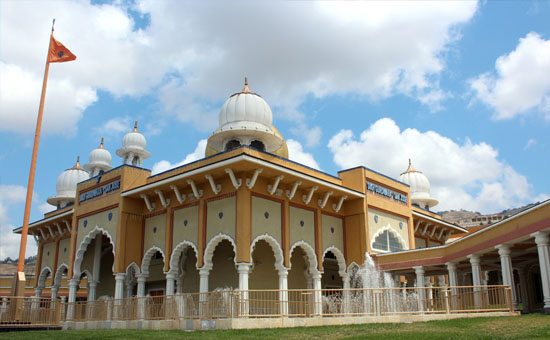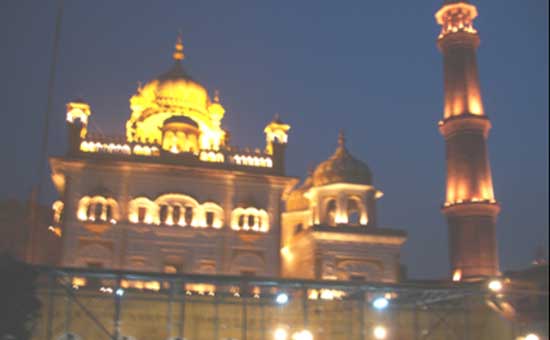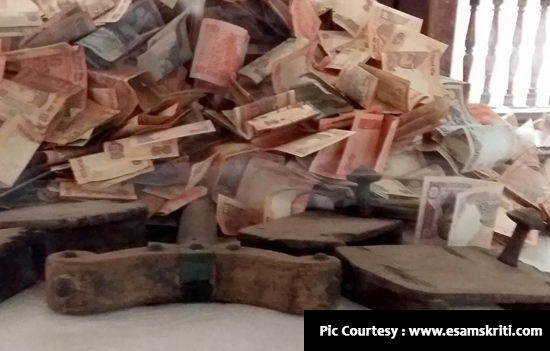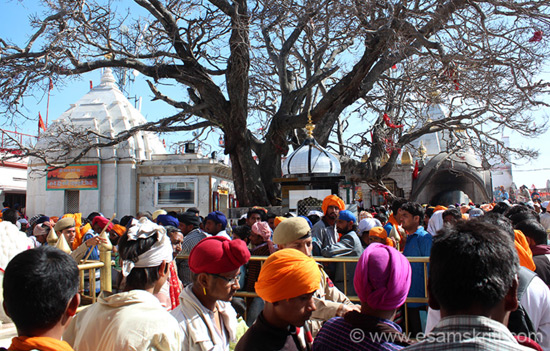- Unless religion and politics are separated, Punjab will be volatile.
- Article covers reasons for birth of SGPC.
Does the 1925 Act authorise SGPC to play role of a Sikh Vatican?
Punjab is forever in the news be it groundwater depletion, green revolution, drugs, prosperous NRI’s, violence, migration, conversions to Christianity and recent protest by supporters of Amritpal Singh.
An
important part of society in Punjab is the Shiromani Gurdwara Prabhandhak
Committee (SGPC). Have you noticed that it expresses a view on many issues as
if it were a protector of Sikh panth! Here are some examples.
SGPC
president appealed to Sikhs to celebrate and observe all religious occasions as per the
calendar released from the Akal Takht so that unity
and uniformity was maintained within the community, SGPC has announced it will send a four-member delegation to Nankana
Sahib in Pakistan to take
stock of the situation following stone-pelting at the historic gurdwara, SGPC has asked
the central government to review
the Citizen Amendment Act
(CAA), give Sikhs in Meghalaya ownership of land, demands SGPC, no Tattoos of Sikh religious symbols warns SGPC, SGPC to set up censor board for films, SGPC bans portrayal of Sikh Gurus and their families in movies.
Without getting into
the right or wrong of the above, as a born Punjabi wondered if SGPC was originally
meant to do this!
 San Jose Gurdwara, California.
San Jose Gurdwara, California.
Nothing happens without
a reason so need to go back a bit in time.
Let me
start with a brief background to formation of the SGPC in 1925
Sanatan
Sikhs were prominent in Amritsar and Tat Khalsa dominant in the Lahore Singh
Sabha. A superficial unity between the two was achieved in 1902 when Chief
Khalsa Divan was formed. It was a coordinating body for the Singh Sabhas. The
differences between the two Sabhas also arose because one regarded the Panth as
a special form of Hindu tradition whilst the other believed Sikhism was a different
religion.
According to scholar/author W.H. Mcleod, “The Tat Khalsa progressively assumed complete dominance of Sikh affairs, introducing newly fashioned rituals, stressing Khalsa forms, and reinterpreting history.” The Tat Khalsa emerged victorious when “in 1905 Hindu idols were removed from the Harimandir.”
Also read How the British
divided Punjab into Hindu and Sikh and Unity
between Sanatan and Sikh Dharma
Although the Singh Sabha movement died out in the 1920's, it awakened the Sikhs. They questioned why the job of a granthi (scripture reader) was done by
members of the Udasi order (not followers of Khalsa) even though it was the practice since the Mughal times. Udasi began with Baba
Siri Chand (son of Guru Nanak Dev and Mata Sulakhani Devi). Udasis are known for their renunciatory outlook as against Sikh belief in worldly activity. Udasi establishments do not fall under the control of SGPC.
The more radical elements organised a
semi-military corps of volunteers known as the Akali Dal (army of immortals) to
fight for SGPC causes. Its aim was to give expression to a revived sense of
Sikh identity.
The Akalis took control of the gurdwaras
after throwing out the mahants.
The success of these protests against
Udasis produced two institutions that dominate Punjab - the SGPC and the Akali
Dal.
The Akalis entered into a dispute with
the British for the control of Sikh gurdwaras. In 1925, the Sikh Gurudwaras Act
was passed. By virtue of its control over gurdwara affairs and revenue, SGPC
became an important body.
The birth of Akali Dal and
its control over gurdwaras heralded the tradition of mixing religion and politics
in Punjab, in a contemporary format.
 Maharaja Ranjit Singh Samadhi, Lahore. Pic by Vikram A.
Maharaja Ranjit Singh Samadhi, Lahore. Pic by Vikram A.
The Akalis are yet to relinquish
control of the SGPC since 1925. The
Congress has been trying to gain control over it for decades.
On becoming chief minister in 1972,
Giani Zail Singh tried his best to wrest control of the SGPC and used every
opportunity to placate Sikh religious sentiments and assert Sikh identity. In
order to regain the initiative, the Akali Dal Working Committee passed the
Anandpur Sahib Resolution in 1973.
Also read Capt
Amarinder Singh gameplan on Kartarpur Corridor
Since then this pattern of politics, competitive communalism and
brinkmanship, has been the hallmark of Punjab.
Actually this mixing of politics and
religion was started by Guru Har Govind (1606 to 1644), after the martyrdom of
his father Guru Arjun, who hung two swords by his side signifying Piri and Miri, one symbolised spiritual power and the temporal (political). Practicing Sikhs also refer to the two swords as
Bhakti and Shakti.
Piri/Miri worked well when the Mughals
ruled but in 21st century Independent India!
Till the Aam Aadmi Party won in 2022 control
of Sikh religious affairs, through the SGPC, was the key to political power in
Punjab.
The Akali control of SGPC have made Jaat Sikhs a powerful community in Punjab although all the Gurus were Khatris. Nanak was a
Bedi, Angad a Trehan, Amar Das a Bhalla and the rest were Sodhis.
Perhaps “Jaats resent that Khatris deprived them of the Guru gaddi. Baba Buddha, a Jaat, was made to do tilak of gurus but never assigned the supreme religious position,” says a scholar from Punjab. Jaat differences with Bhapas (Khatri-Arora
Sikhs) also arise because Jaats see themselves as the original followers of
Khalsa and Bhapas as later entrants. Also
read About
Nishan Sahib and Khanda
A devoted Sikh laments, “SGPC definitions of a Sikh make Sehajdharis, Patits and non-Amritdharis second class Sikhs because they are unable to be elected to the SGPC management but are duty bound by its rules and expected to contribute money and labour (sewa).” A 2016 amendment
disentitled Sehajdharis from voting in the elections of SGPC and managing committees.
 Charan Padukas Khadavas, wooden footwear of Guru Nanak and Baba Srichand. Lakhpat Gurdwara, Kutch.
Charan Padukas Khadavas, wooden footwear of Guru Nanak and Baba Srichand. Lakhpat Gurdwara, Kutch.
Deeper Intent seems to make
Sikhs follow the concept of One Book, like Abrahamic religions!
Actually this concept of one book is
alien to India. Indic faiths have multiple scriptures and are not mutually
exclusive. India has nine schools of darsanas meaning nine ways to
achieve self-realisation. These are Nyaya,
Vaisheshika, Sakhya, Yoga, Mimamsa, Vedanta, Carvaka, Jaina and Buddha. Others are a mixture of the ideas of these systems. There is
no Hindu or Sikh school of philosophy.
Also read
Characteristics of Indian Philosophy And Comparing Indic
vs. Abrahamic Faiths
In line with this exclusivist approach Sindhis
of Indore were recently asked to remove the Granth Sahib from their place of
worship.
The SGPC says that Sindhis are Sehajdhari Sikhs and
activists of the Satkar Committee from Punjab
alleged violation of Sikh Rehat Maryada. The problem is there are differing
versions of who is a Sehajdhari Sikh. Read here .
Question - When was the Rehat Maryada created, by
whom and why?
Also read
Why do Sindhis
worship Granth Sahib
So why was the SGPC formed?
Surely control of Gurdwaras of Punjab
was an important reason for its formation. Perhaps, another unmentioned reason
was to cement the division between Hindus and Sikhs, efforts for which began
around 1870. The British supported that effort.
So they allowed Sikhs to manage their Gurdwaras vide the 1925 Act whilst bringing Hindu temples under government control through the Madras
Hindu Religious and Endowments Act 1927.
Next, the 1925 SGPC Act definition of
who is a Sikh is a typical Singh Sabha/Akali/exclusivist/separatist/alienating
view. To know who are Nirankaris, Brahmin and Ravidassa Sikhs read here
Also
read
How Hindu
temples came under Government control And Caste
in Sikhs
Actually,
the deeper reality is that modern day Sikhism is a colonial aided post 1900
construct.
 Sikh devotees at Naina Devi Mandir, Himachal near Anandpur Sahib.
Sikh devotees at Naina Devi Mandir, Himachal near Anandpur Sahib.
Pashaura Singh of
Department of Religious Studies, University of California wrote in MDPI.com, “As a consequence of the success of the Tat Khalsa reformers, Sikhs in the early 20th century came “to think, imagine and speak in terms of a universal community of believers united by uniform rites, symbols and scripture.”
“The Singh Sabha ideologues employed Protestant categories
of Christian missionaries to redefine Sikh concepts. As such, modern Sikhism became a well-defined ‘system’ based on a unified tradition and the Tat Khalsa understanding of Sikh identity became the norm of orthodoxy. ”
“In a recent study, Arvind-Pal Mandair described the impact of colonial rule on the Sikh tradition as follows: “In the process of projecting themselves as a legitimate body in the public sphere governed by British law, the earlier principle of heteronomic sovereignty was overlain, and to some extent displaced, by modernist principle of autonomic sovereignty which was essential for converting the Panth into a nationalized community (or qaum)
characterized by the notion of a people with its proper religion (Sikhism), their own language (Punjabi) and a geographical territory or homeland they could call their own (Punjab).”
Also read
Is Modern Day
Sikhism a Colonial Construct
It is this artificially created division that is a source of discord in Punjab. Many might disagree but i.e. the reality. A former diplomat who worked in Pakistan that Sikhs will take to violence if they fear loss of identity. Hindus have no intent to make Sikhs loose their culture and identity. If Sikhs look at Sanatana Dharma, through the lens of the Upanishads and not Puranas they might realize both are monotheistic. It is a Hindu nationalist government that gave shelter to Sikhs from Afghanistan!
Also
read
What
happened during the Khalistan Movement And To know about the real butchers of Khalistan
Unless religion and
politics are separated, Punjab will always be unstable.
Returning to the core issue, does the SGPC Act give it control over Sikh affairs
countrywide?
I
downloaded the SGPC Act (on
25.2.2023) from the site of the Ministry of Home Affairs.
SGPC administers, under the 1925 Act, Sikh Gurdwaras in the states of Punjab, Haryana, Himachal Pradesh and Union Territory of Chandigarh. Recently, the Supreme
Court upheld the validity of the Haryana Sikh Gurdwaras (Management Act)
2014. It means that SGPC has to handover the management of Gurdwaras to its
counterpart in Haryana.
A reading of the bare 1925 Act shows that it is about management of Gurdwaras, elections to the management bodies and defines who is a Sikh. I was unable to find intent to make the SGPC a Vatican.
Thus, it would be worthwhile knowing the basis on which SGPC makes declarations w.r.t. portrayals of Sikh Gurus in Bollywood or no tattoo of Sikh religious symbols.
To conclude, those rooting for Khalistan must first establish their capital at Lahore since it was the capital of Maharaja Ranjit Singh. Once done they can prevent flow of drugs into East Punjab.
Punjab
is dying and needs surgery. It is very easy to blame others but difficult to
look within and change. Read Punjab
should reform its subsidy culture and reduce dependence on MSP
Prime Minister Modi seems to have a soft corner for the Sikh Panth. Hope the community takes advantage.
The Supreme Court seems wary of Punjab. A 2007 judgement of the Punjab and Haryana High Court held Sikhs not be a minority in Punjab when by population they are in majority and been ruling the state since it was formed in 1966. SC began examining the matter in 2016 according to this report. We are in 2023, order
awaited.
All pictures
by author except when stated. Errors, if any are unintended. Do mail
with sources, and if found admissible, shall gladly correct the errors.
Also read
1. Life and teachings of Sant
Ravidas
2. Album Hari Mandir, Amritsar
3. How California Gurudwaras have
cemented the Hindu Sikh divide
4. Hindu Sikh unbreakable bond
5. Durgiana Temple, Amritsar was
made in 1925
6. Is
Punjab the Land of Five Rivers
7. Why
do Sikhs wear Turbans
8. Life
and Teachings of Sant Ravidas
9. What
were the events that led to Bluestar
10. The
real butchers of Punjab were Khalistanis not KPS Gill